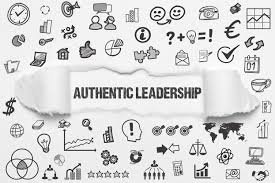For many female executives, one of the most challenging aspects of leadership is being the only woman in a room full of men. The dynamics in these situations can sometimes feel like you’re navigating invisible boundaries, where your ideas may be questioned, your authority might be subtly undermined, or your perspective could be overlooked. However, these challenges also present an opportunity to bring a fresh viewpoint, reshape cultural norms, and pave the way for future leaders.
Here are some strategies to help you navigate and thrive as a female leader among male colleagues.
1. Stand Firm in Your Expertise and Accomplishments. As the only woman, you might feel pressure to “prove” yourself repeatedly, even after demonstrating your proficiencies. Instead, stand firm in your achievements. Resist the urge to minimize your contributions or downplay your success. Speak with confidence and conviction, letting your abilities speak for themselves. When you project self-assurance, others are more likely to respond with respect.
2. Leverage Your Unique Perspective. Being the only woman allows you to bring a valuable, distinct perspective that might otherwise be missing in decision-making. Use this to your advantage. Your experiences, insights, and ideas are assets that can enhance the team’s strategy and broaden its viewpoints. Whether it’s about understanding diverse customers, advocating for inclusive policies, or simply offering a different take, your voice brings value that enriches the entire team.
3. Create Alliances and Seek Allies. Building alliances can be especially helpful in an environment where you’re the minority. Identify colleagues who respect and support your ideas, and look for opportunities to collaborate with them. These allies can help amplify your voice, advocate for your ideas, and offer support in meetings. Finding a mentor within the organization or in your industry can also be invaluable in navigating the nuances of being the only female executive.
4. Communicate Clearly and Directly. When leading in a male-dominated environment, clarity and assertiveness are key. Communicate your ideas directly, using concise language to convey your points. Practice speaking confidently and avoid qualifying language that might diminish your authority, such as “I just think…” or “Maybe…” Maintaining clear communication reinforces your credibility and makes your voice heard.
5. Navigate Interruptions and Assert Your Presence. Research has shown that women are often interrupted more than men in professional settings. If this happens, it’s crucial to maintain your presence. Politely but firmly reclaim the floor by saying, “If I can finish this last point and then I’d love to hear your idea” or if they have already interrupted, you can retake the stage by saying “If I can circle back to my point before shifting gears….” Establishing a strong presence ensures that your contributions are not overlooked and bolsters the importance of your input.
6. Use Emotional Intelligence to Build Connections. Emotional intelligence is a key strength that can help you navigate complex team dynamics. Listening actively, empathizing with colleagues, and reading the room can enhance your ability to build strong connections. Leveraging your emotional intelligence allows you to gain allies, bridge communication gaps, and cultivate a collaborative environment that values diverse perspectives.
7. Lead by Example and Advocate for Inclusion. As a trailblazer, you have the unique opportunity to set a positive example for future female leaders and to champion inclusion. By endorsing policies that support diversity, equity, and inclusion, you create a workplace culture where everyone feels valued. Being open about your experiences as the only woman in the room can foster dialogue and inspire change within the organization.
Being the only woman in the room may present obstacles, but it also gives you a platform to lead with authenticity and influence change. By asserting your expertise, building alliances, and communicating confidently, you can command respect and make a lasting impact. This journey requires resilience, self-assurance, and a dedication to lifting others as you rise. Remember, you’re not only paving the way for your success but for the many female leaders who will follow in your footsteps.
Question: Have you ever been the only in a room? If so, how have you handled it? Comment and share below; we’d love to hear from you!
Quote of the day: "Leadership is about making others better as a result of your presence and making sure that impact lasts in your absence." – Sheryl Sandberg
The next blog in this series 3/3 will focus on another leadership challenge of leading former peers.
As a leadership development and executive coach, I work with leaders to sharpen their leadership skills, contact me to explore this topic further.
How Do You Lead as the Only in the Room?





